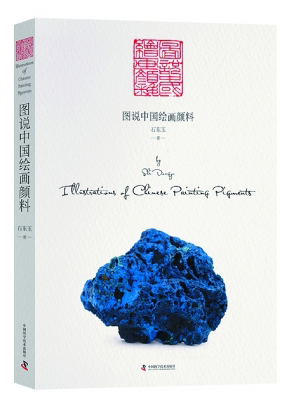Exploring color diversity in traditional Chinese painting

Illustrations of Chinese Painting Pigments
The traditional Chinese color system, with its proud history, has unique oriental, cultural and aesthetic significance. In its long history, it has been condensed down into an indispensable part of the Chinese spirit. However, many people still only associate black and white ink paintings with traditional Chinese painting. Its magnificent murals, colorful folk art, and elegant green landscapes are rarely connected.
Actually, Chinese art uses a rich spectrum of color. In Illustrations of Chinese Painting Pigments, with my own painting practice and through the verification of ancient literature and materials, I try to explore the use of traditional Chinese painting pigments including minerals, plants, animals and other paints, and their close relationship with Chinese art.
According to archaeological findings, the use of Chinese paints can be traced back to the Paleolithic Age. Twenty or thirty thousand years ago, Upper Cave Men had already explored the simple use of color by using red mineral pigments to decorate daily necessities. During the Xia, Shang and Zhou dynasties, according to the hierarchical order at that time, our ancestors gradually formed a five-color system of cyan, red, white, black and yellow. As for the Qin and Han dynasties, the five colors were more commonly used in murals, silk paintings, lacquer paintings, brick paintings and stone statues. During the Wei and Jin dynasties, the use of pigments and relevant techniques was greatly improved, and the fading method in pursuit of shade and three-dimensionality began to appear.
After entering the Sui, Tang, and Five dynasties, with enhanced national strength, a prosperous economy and innovation, Chinese painting matured in an all-round way. At that time, figures, landscapes, flowers and birds became independent genres of painting, and murals were dominated by cyan, green, red, reddish brown and white while more monochrome and compound colors also appeared. During the Song Dynasty, this rich color diversity still occupied the mainstream position. The masterpiece Night Revels of Han Xizai depicts the night banquet life of the Han mansion in the Southern Tang Dynasty, and the use of the five colors in this work has had a great impact on later generations. Regrettably, in the Yuan Dynasty, Chinese color painting began to give way to the development of ink painting and was only pursued in folk art to a large extent.
After a century of wandering and controversy, China’s art society began to call for the recovery of its traditions. If we can’t understand the techniques and materials our ancestors used in painting, it is difficult to appreciate the wonderful colored sculptures of the Shuanglin Temple, or the splendid murals of the Mogao Grottoes, or the inner aesthetic meaning and unique techniques of Madam Guo’s Spring Outing and The Vast Land.
(edited by YANG LANLAN)
